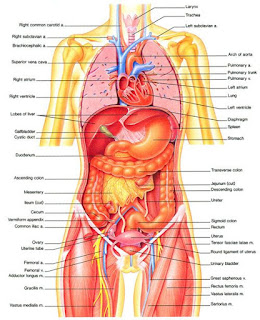Week 4: MedTech + Art
In this week’s topic, we learned about how medicine,
technology, and art relate to each other. In the time of renaissance, anatomy
and dissection was at the intersection of art and science. People first did
human dissection because they wanted to know how the body looks and works.
Ancient Greek did human dissection in more a scientific way and going into more
scientific method and science coming together.
Andreas Vesalius was the first anatomist and physician who
is the founder of modern human anatomy who wrote De Humani Corporis Fabrica
1543. In this work, treatment of the disease was to be more rigid and accurate
inside and outside. I understand that it is important to know human anatomy and
how it works, but still back in the days people being tested to be dissected is
very cruel thing to do. However, with his work we learned about human body, so
I guess it was small sacrifice for the big.
In 1858, Henry Gray published a book called “Anatomy” and it
showed how beauty and human appeal has shifted. I was very shocked that this
book called Anatomy has now 40th edition which means that it was
been developed for decades. In class when I buy textbooks, most of them are
under 10th edition, but 40th edition means that people
has been using that book for long time and kept developing that textbook for
better use. I have seen Anatomy textbook and it looks very complicated but also
looks somewhat beautiful like art work. How human body looks very structural and
organized.
After physically dissecting human bodies to get information
of anatomy, Whilhelm Conrad Rontegen invented x-ray in 1895. X-ray is more of
scientific way to look at human’s bodies by shooting high energy rays and radiation.
However, x-ray only shows difference between hard materials and soft materials,
so it was not enough to look at human tissues. Therefore, after x-ray MRI and
CAT scan were invented and helped many of anatomy work and human’s bodies. From
human dissection to MRI, science, technology, and art played big role to make
better lives of these days.
I was surprised that plastic surgery was first derived from
World War 1. I thought plastic surgery was for only beauty use, but it was for physical
reconstructive. When I think of plastic surgery, people put silicon in their
nose, breast, or other physical parts of their bodies. However, the word
plastic from plastic surgery is not the plastic that we think it is. The word
plastic came from Greek word plasticos which means to give mold or to give
form.
Work Cited
“Body World.” BODY WORLDS : The Happiness Project, tours-cdn.azureedge.net/cid66/63120/69978_800.jpg.
“De Humani Corporis
Fabrica.” Wikipedia,
upload.wikimedia.org/wikipedia/commons/thumb/e/ee/Vesalius_Fabrica_fronticepiece.jpg/1200px-Vesalius_Fabrica_fronticepiece.jpg.
“Difference between X-Ray and MRI.” Difference Between, 30 Nov. 2016, www.differencebtw.com/difference-between-x-ray-and-mri/.
Harold Gillles Plastic Surgery Archives from WWI, www.findmypast.com/articles/world-records/full-list-of-united-kingdom-records/armed-forces-and-conflict/harold-gillles-plastic-surgery-archives-from-wwi.
Johnson, Mylesha.
“Nursing.” Pinterest, 1 Feb. 2017, www.pinterest.com/pin/379076493620650684/.
“Usability of Electronic Medical Records.” -
International Journal of Usability Studies. N.p., n.d. Web. 25 Oct.
2012. <http://www.upassoc.org/upa_publications/jus/2009february/smelcer5.html>.
Vesna, Victoria. “Http://www.youtube.com/v/Ep0M2bOM9Tk.”
Lecture. Medicine pt1 . Youtube, 21 Apr. 2012. Web. 25 Oct. 2012.
<http://www.youtube.com/watch?v=Ep0M2bOM9Tk>.
Vesna, Victoria. “Http://www.youtube.com/v/psjnQarHOqQ.”
Lecture. Medicine pt2 . Youtube, 21 Apr. 2012. Web. 25 Oct. 2012.
<http://www.youtube.com/watch?v=psjnQarHOqQ>.
Vesna, Victoria. “Http://www.youtube.com/v/FIX-9mXd3Y4.”
Lecture. Medicine pt3. Youtube, 22 Apr. 2012. Web. 25 April. 2018.
<http://www.youtube.com/watch?v=FIX-9mXd3Y4>
Wong, Virgil. “Art Exhibited in Galleries and Museums around
the World.” Art. N.p., 2012. Web.
26 Oct. 2012. <http://virgilwong.com/art/>.







댓글
댓글 쓰기